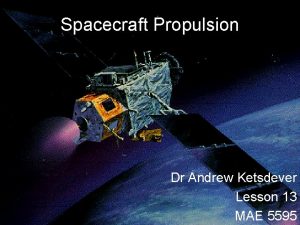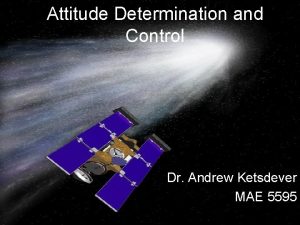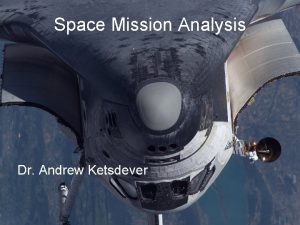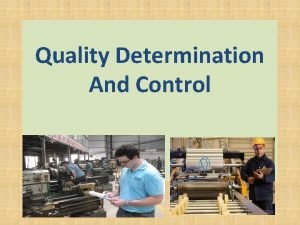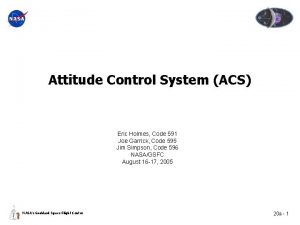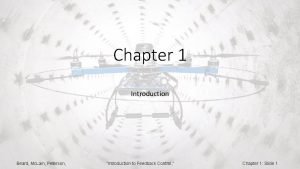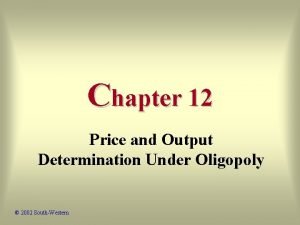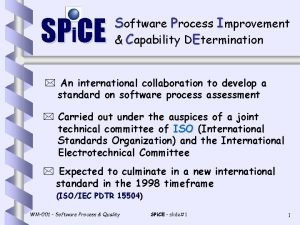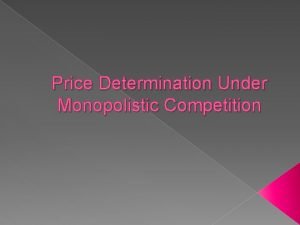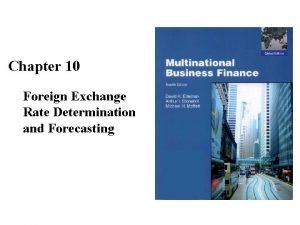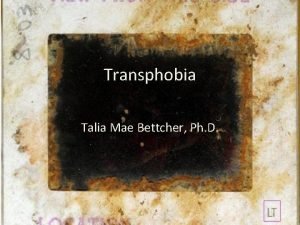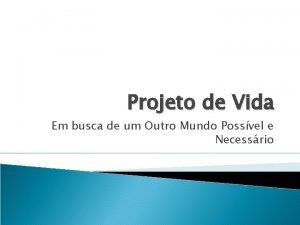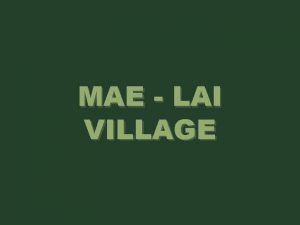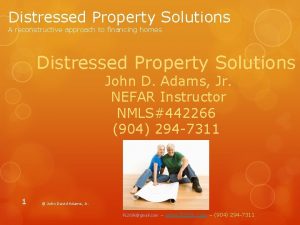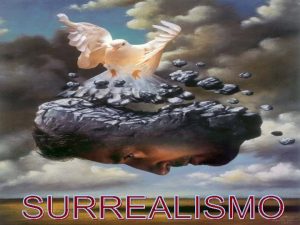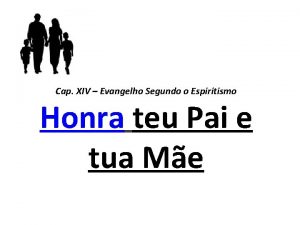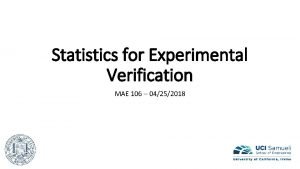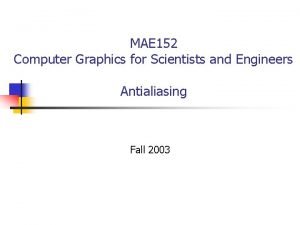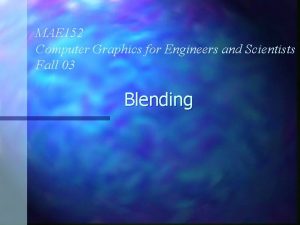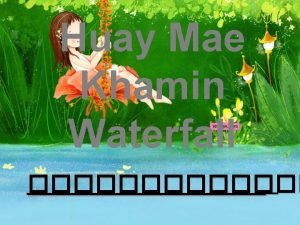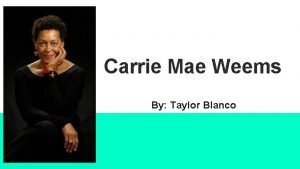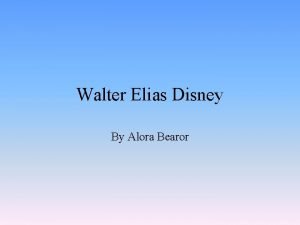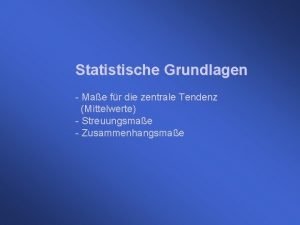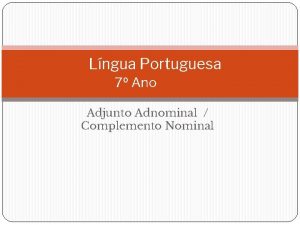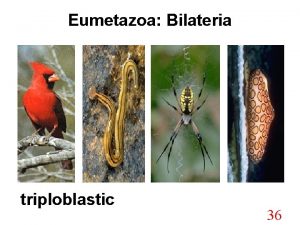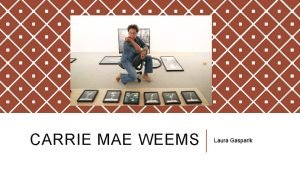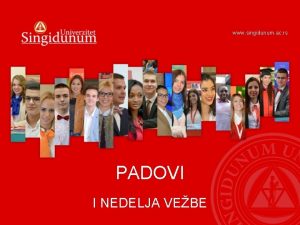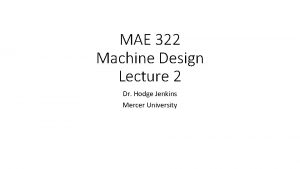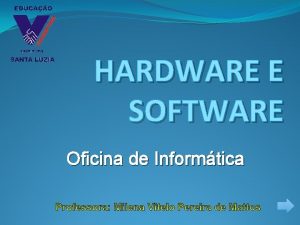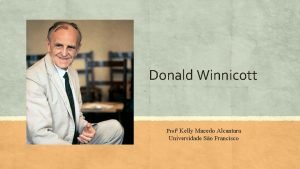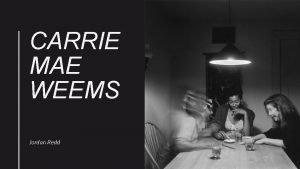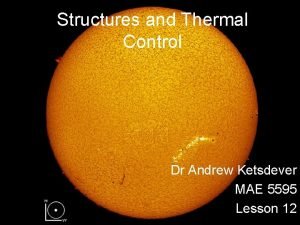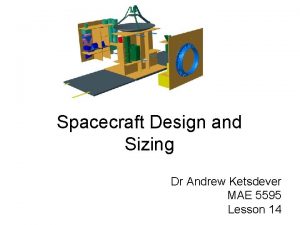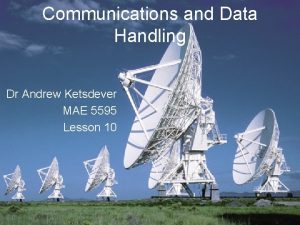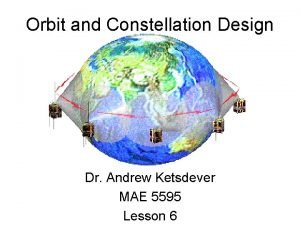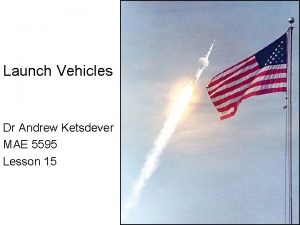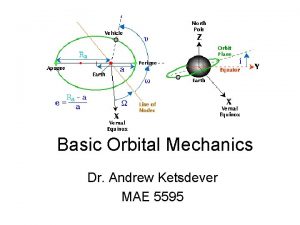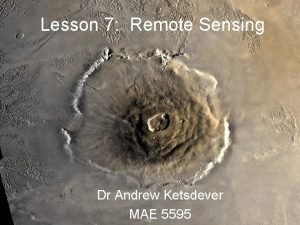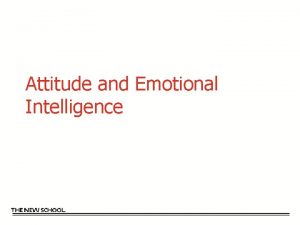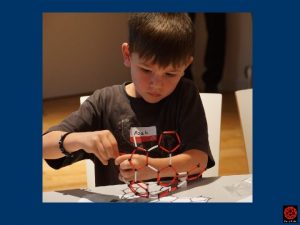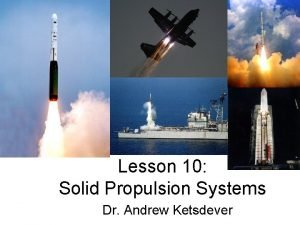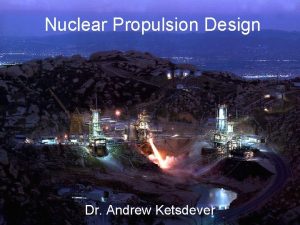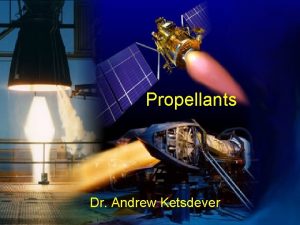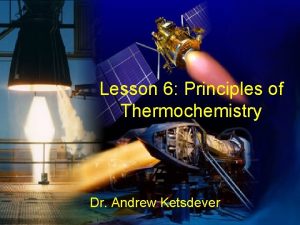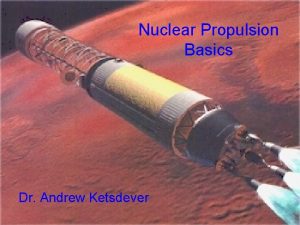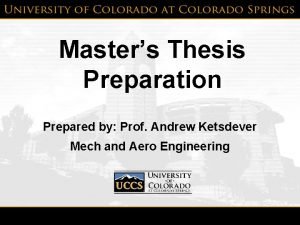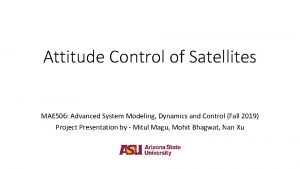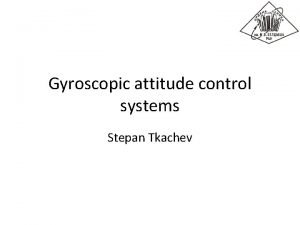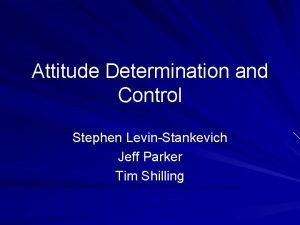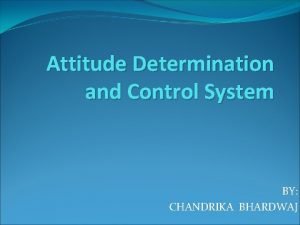Attitude Determination and Control Dr Andrew Ketsdever MAE










































- Slides: 42

Attitude Determination and Control Dr. Andrew Ketsdever MAE 5595

Outline • Introduction – – • Definitions Control Loops Moment of Inertia Tensor General Design Control Strategies – Spin (Single, Dual) or 3 -Axis • Disturbance Torques – – • Sensors – – – • Magnetic Gravity Gradient Aerodynamic Solar Pressure Sun Earth Star Magnetometers Inertial Measurement Units Actuators – – – Dampers Gravity Gradient Booms Magnetic Torque Rods Wheels Thrusters

INTRODUCTION

Introduction • Attitude Determination and Control Subsystem (ADCS) – Stabilizes the vehicle – Orients vehicle in desired directions – Senses the orientation of the vehicle relative to reference (e. g. inertial) points • Determination: Sensors • Control: Actuators • Controls attitude despite external disturbance torques acting on spacecraft

Introduction • ADCS Design Requirements and Constraints – Pointing Accuracy (Knowledge vs. Control) • Drives Sensor Accuracy Required • Drives Actuator Accuracy Required – – – – Rate Requirements (e. g. Slew) Stationkeeping Requirements Disturbing Environment Mass and Volume Power Reliability Cost and Schedule

Introduction Z Nadir Y X Velocity Vector

Control Loops Disturbance Torques Desired Attitude Control Task e. g. +/- 3 deg Ram pointing Estimated Attitude e. g. – 3. 5 deg Ram pointing Attitude Determination Task Commands e. g. increase Wheel speed 100 rpm Attitude Actuators Actual Attitude e. g. – 4 deg Ram pointing Attitude Sensors Spacecraft Dynamics - Rigid Body - Flexible Body (non-rigid)

Mass Moment of Inertia where H is the angular momentum, I is the mass moment of inertia tensor, and W is the angular velocity where the cross-term products of inertia are equal (i. e. Ixy=Iyx)

Mass Moment of Inertia • For a particle • For a rigid body

Mass MOI Rotational Energy:

Mass MOI • Like any symmetric tensor, the MOI tensor can be reduced to diagonal form through the appropriate choice of axes (XYZ) • Diagonal components are called the Principle Moments of Inertia

Mass MOI • Parallel-axis theorem: The moment of inertia around any axis can be calculated from the moment of inertia around parallel axis which passes through the center of mass.

ADCS Design

ADCS Design

ADCS Design

ADCS Design

ADCS Design

Control Strategies


Gravity Gradient Stabilization • Deploy gravity gradient boom • Coarse roll and pitch control • No yaw control • Nadir pointing surface • Limited to near Earth satellites Best to design such that Ipitch > Iroll > Iyaw

Spin Stabilization • Entire spacecraft rotates about vertical axis • Spinning sensors and payloads • Cylindrical geometry and solar arrays

Spin Stability UNSTABLE S S T T

Satellite Precession • Spinning Satellite • Satellite thruster is fired to change its spin axis • During the thruster firing, the satellite rotated by a small angle Df • Determine the angle Dy Dy H w Df R F F

Dual Spin Stabilization • Upper section does not rotate (de-spun) • Lower section rotates to provide gyroscopic stability • Upper section may rotate slightly or intermittently to point payloads • Cylindrical geometry and solar arrays

3 -Axis Stabilization • Active stabilization of all three axes – Thrusters – Momentum (Reaction) Wheels • Momentum dumping • Advantages – No de-spin required for payloads – Accurate pointing • Disadvantages – Complex – Added mass

Disturbance Torques

External Disturbance Torques NOTE: The magnitudes of the torques is dependent on the spacecraft design. Torque (au) Drag Gravity Solar Press. Magnetic LEO GEO Orbital Altitude (au)

Internal Disturbing Torques • Examples – Uncertainty in S/C Center of Gravity (typically 1 -3 cm) – Thruster Misalignment (typically 0. 1° – 0. 5°) – Thruster Mismatch (typically ~5%) – Rotating Machinery – Liquid Sloshing (e. g. propellant) – Flexible structures – Crew Movement

Disturbing Torques

Gravity Gradient Torque z where: y q

Magnetic Torque where: *Note value of m depends on S/C size and whether on-board compensation is used - values can range from 0. 1 to 20 Amp-m 2 - m = 1 for typical small, uncompensated S/C

Aerodynamic Torque where:

Solar Pressure Torque where:

Fire. Sat Example

Disturbing Torques • All of these disturbing torques can also be used to control the satellite – – Gravity Gradient Boom Aero-fins Magnetic Torque Rods Solar Sails

Sensors

Attitude Determination • Earth Sensor (horizon sensor) – Use IR to detect boundary between deep space & upper atmosphere – Typically scanning (can also be an actuator) • Sun Sensor • Star Sensor – Scanner: for spinning S/C or on a rotating mount – Tracker/Mapper: for 3 -axis stabilized S/C • Tracker (one star) / Mapper (multiple stars) • Inertial Measurement Unit (IMU) – Rate Gyros (may also include accelerometers) • Magnetometer – Requires magnetic field model stored in computer • Differential GPS

Attitude Determination

Actuators

Attitude Control • Actuators come in two types – Passive • • Gravity Gradient Booms Dampers Yo-yos Spinning – Active • • Thrusters Wheels Gyros Torque Rods

Actuators Actuator Accuracy Comment Gravity Gradient 5º 2 Axis, Simple Spin Stabilized 0. 1º to 1º 2 Axis, Rotation Torque Rods 1º High Current Reaction Wheels 0. 001º to 0. 1º High Mass and Power, Momentum Dumping Control Moment Gyro 0. 001º to 0. 1º High Mass and Power Thrusters 0. 1º to 1º Propellant limited, Large impulse

Attitude Control
 Andrew ketsdever
Andrew ketsdever Andrew ketsdever
Andrew ketsdever Andrew ketsdever
Andrew ketsdever Firesat
Firesat Control determination
Control determination Acs attitude control system
Acs attitude control system Lain peterson
Lain peterson Sex
Sex Sex linkage
Sex linkage Price and output determination under oligopoly
Price and output determination under oligopoly Sex determination and sex linkage
Sex determination and sex linkage Software process improvement and capability determination
Software process improvement and capability determination Super normal profit meaning
Super normal profit meaning Exchange rate determination and forecasting
Exchange rate determination and forecasting Price discovery and price determination
Price discovery and price determination Talia mae bettcher
Talia mae bettcher Antes que eu te formasse dentro do ventre de tua mãe
Antes que eu te formasse dentro do ventre de tua mãe Nú sai do ventre de minha mãe musica
Nú sai do ventre de minha mãe musica Mae lai
Mae lai Ucd fannie mae
Ucd fannie mae Fannie mae homepath nightmare
Fannie mae homepath nightmare Mae west salvador dali
Mae west salvador dali Honrar pai e mae segundo o espiritismo
Honrar pai e mae segundo o espiritismo Quais são as virtudes de nossa senhora
Quais são as virtudes de nossa senhora Efolder elliemae com
Efolder elliemae com Words to welsh national anthem
Words to welsh national anthem Mae 106
Mae 106 Mae 152
Mae 152 Blending function in computer graphics
Blending function in computer graphics Huay mae kamin waterfall
Huay mae kamin waterfall Faith c. weems
Faith c. weems Alora disney
Alora disney Mae.fr
Mae.fr Nas orações camila tem muito amor à mãe
Nas orações camila tem muito amor à mãe Eumetazoa triploblastic
Eumetazoa triploblastic Charater
Charater Zempo ukemi
Zempo ukemi Sonhar com cobra debaixo da cama
Sonhar com cobra debaixo da cama Mae 322
Mae 322 Hardware de oficina
Hardware de oficina Nossa senhora mãe dos sacerdotes
Nossa senhora mãe dos sacerdotes Mãe insuficientemente boa
Mãe insuficientemente boa Carrie mae weems biography
Carrie mae weems biography
